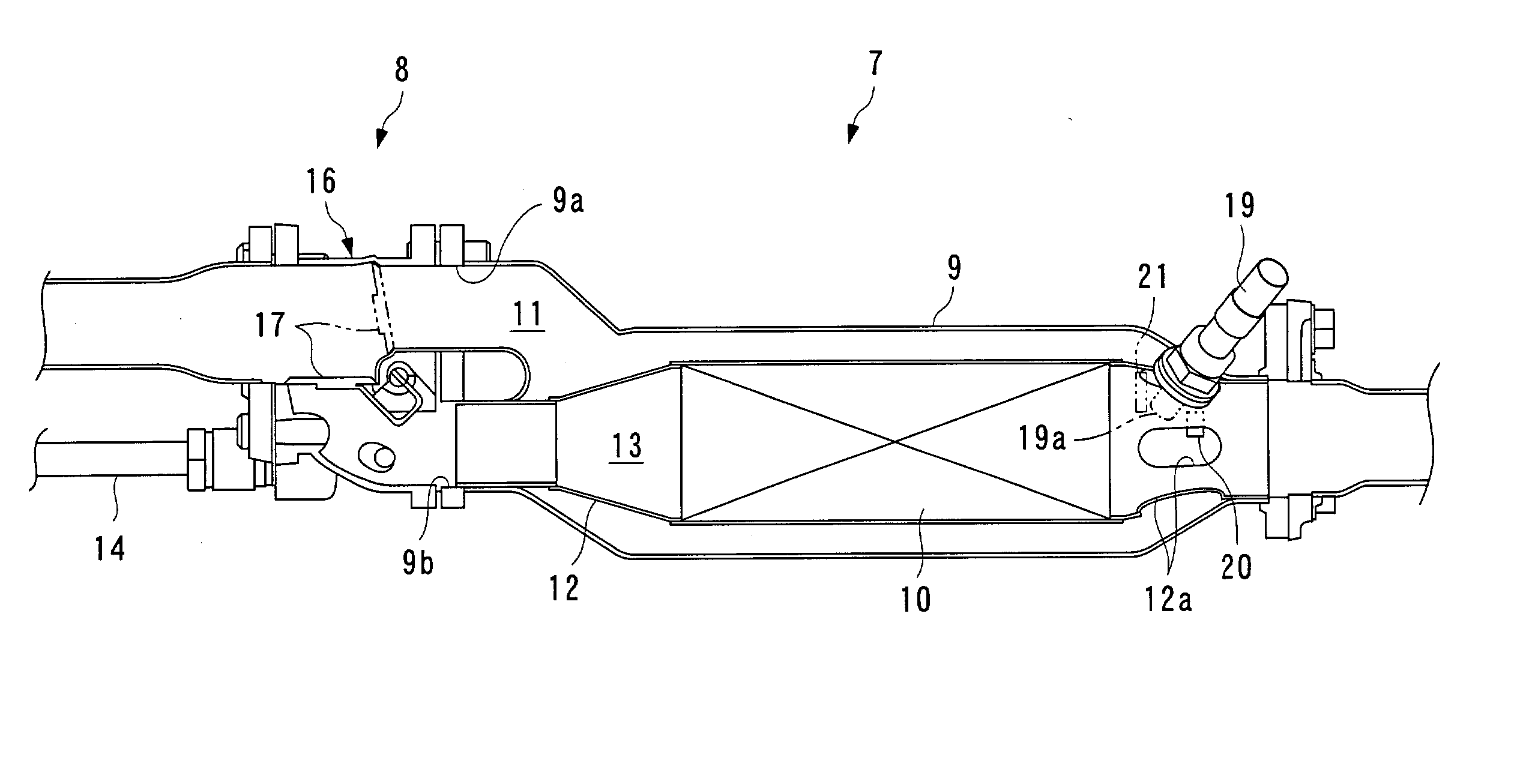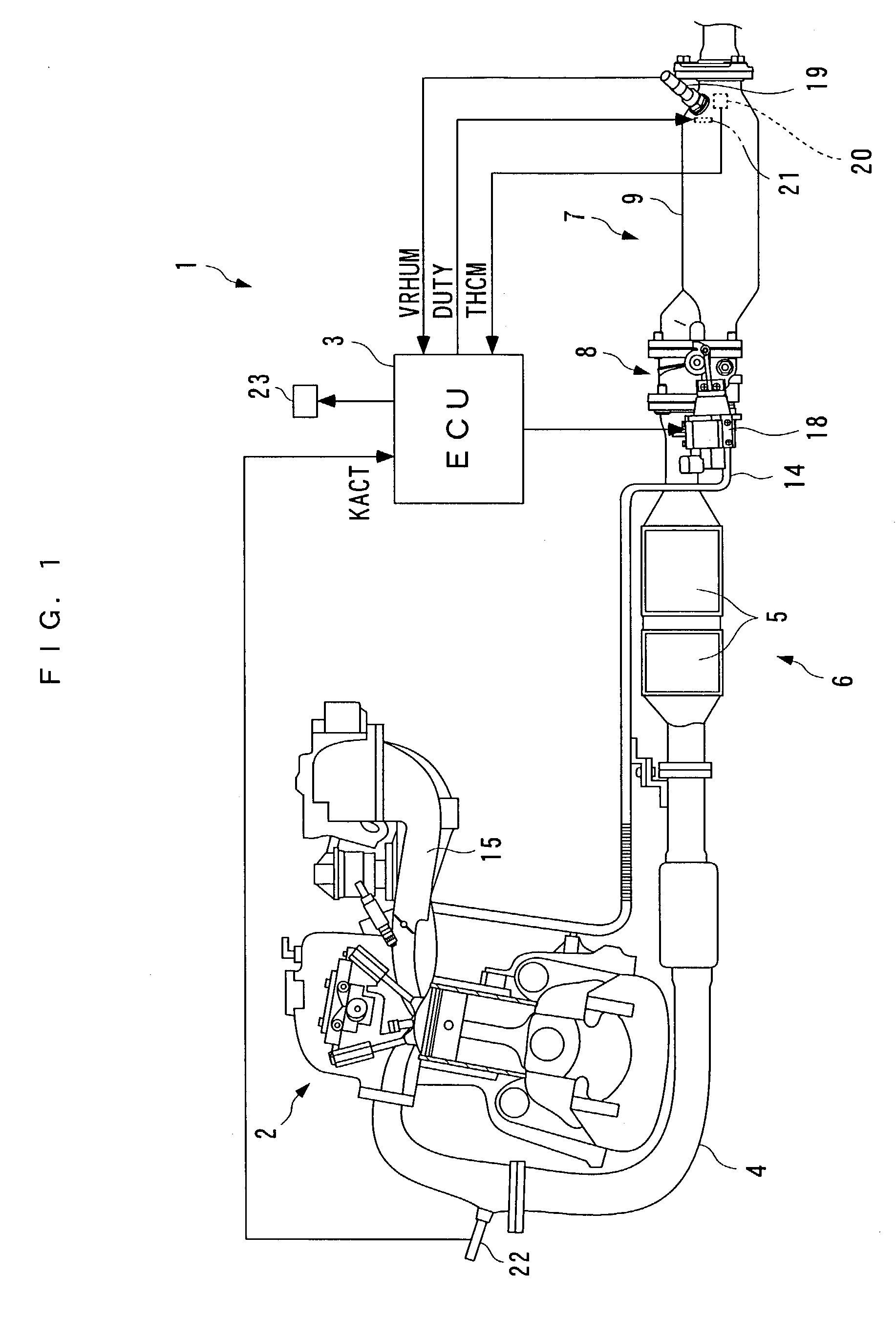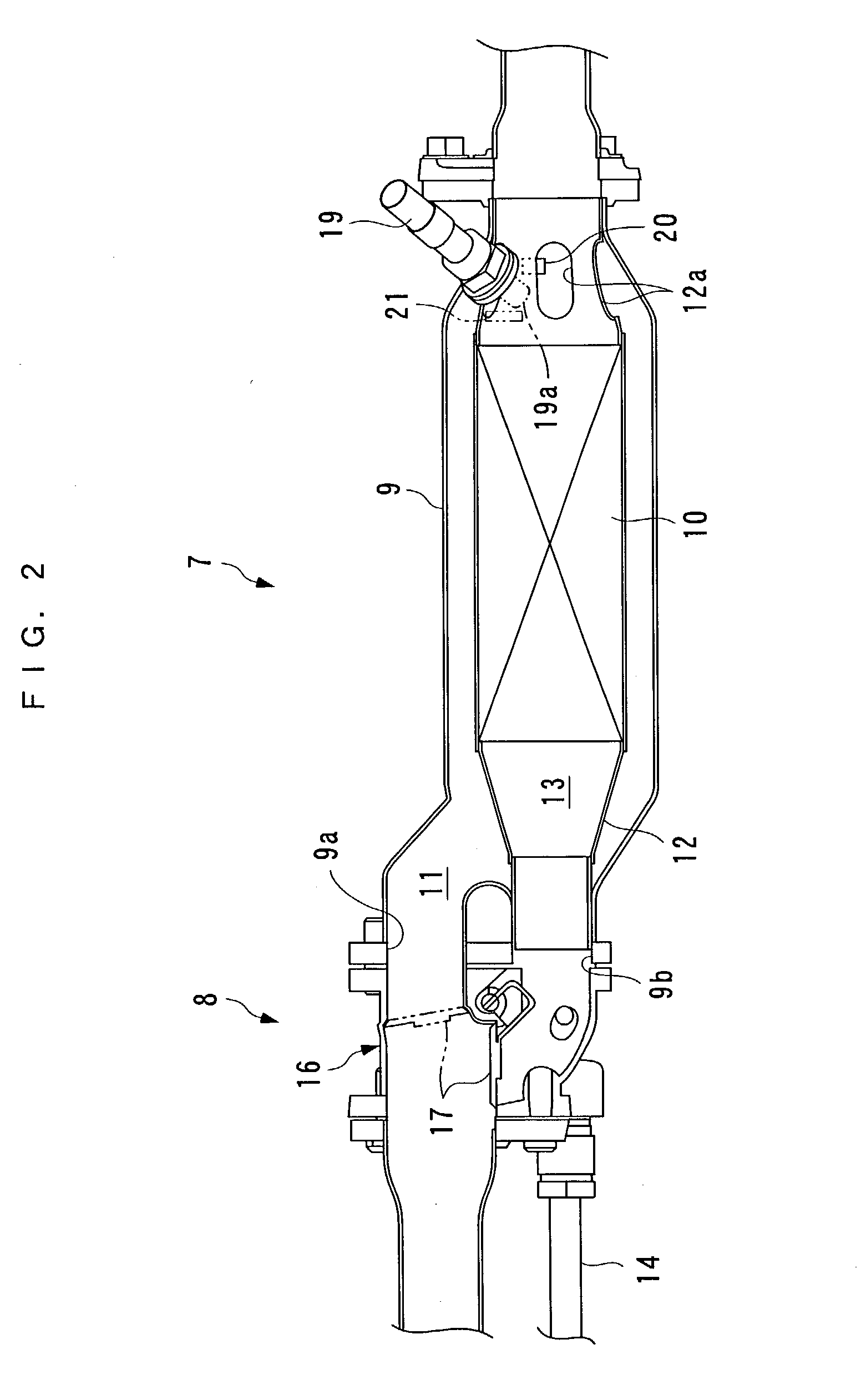Temperature control apparatus for humidity sensor
- Summary
- Abstract
- Description
- Claims
- Application Information
AI Technical Summary
Benefits of technology
Problems solved by technology
Method used
Image
Examples
Embodiment Construction
[0031] In the following, a preferred embodiment of the present invention will be described in detail with reference to the accompanying drawings. FIG. 1 illustrates an internal combustion engine (hereinafter called the "engine") 2 which employs a temperature control apparatus for a humidity sensor 1 (hereinafter simply called the "control apparatus") according to one embodiment of the present invention. As illustrated in FIG. 1, the control apparatus 1 comprises an ECU 3 (which implements a heater control means and a characteristic change parameter calculating means) which executes control processing, later described.
[0032] A catalyzer 6 having two three-way catalysts 5, and a hydrocarbon adsorber 7 for adsorbing hydrocarbons are provided in this order from the upstream side, halfway in an exhaust pipe (exhaust passage) 4 of the engine 2 for purifying exhaust gases. The two three-way catalysts 5 of the catalyzer 6 are arranged adjacent to each other along the exhaust pipe 4, and pur...
PUM
 Login to View More
Login to View More Abstract
Description
Claims
Application Information
 Login to View More
Login to View More - R&D
- Intellectual Property
- Life Sciences
- Materials
- Tech Scout
- Unparalleled Data Quality
- Higher Quality Content
- 60% Fewer Hallucinations
Browse by: Latest US Patents, China's latest patents, Technical Efficacy Thesaurus, Application Domain, Technology Topic, Popular Technical Reports.
© 2025 PatSnap. All rights reserved.Legal|Privacy policy|Modern Slavery Act Transparency Statement|Sitemap|About US| Contact US: help@patsnap.com



